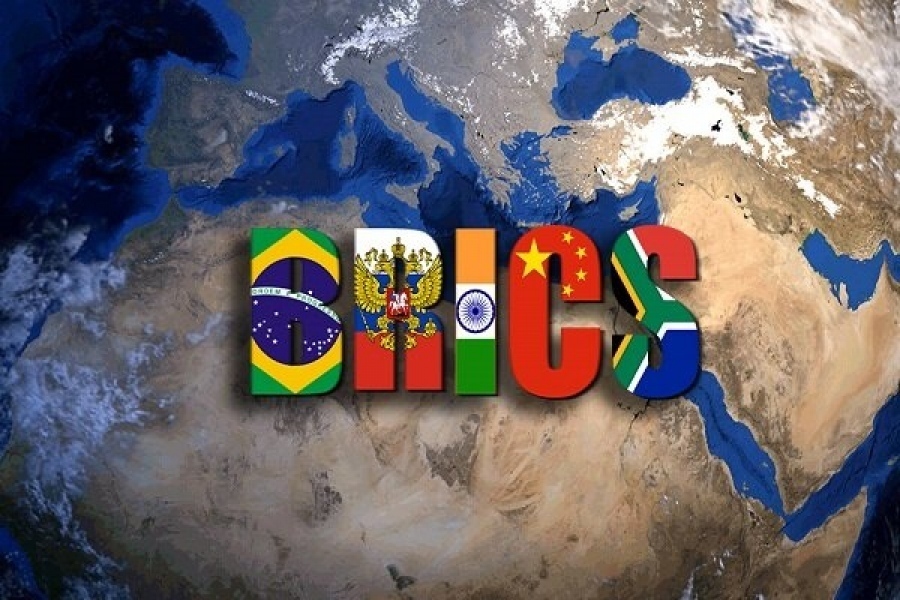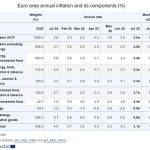Global reversal – The BRICS are loading up on gold – Trump’s sanctions on Russian oil boomerang

While the BRICS continue to strengthen, the US economy shows signs of slowing down.
The recent expansion of Washington’s sanctions on Russia, the rapid increase in gold reserves in the BRICS, and the reconfiguration of oil flows are testing US economic dominance, as central banks and policymakers adapt to a new world order.
The expansion of US sanctions against Russia disrupted global oil flows and reinforced the need for the BRICS bloc to formulate more autonomous economic strategies. The core BRICS countries, India, China, and Brazil, have been forced to rethink their energy policies as access to Russian crude becomes increasingly restricted.
According to recent reports, India’s state refiners are now turning to American companies for new supply agreements—not only to secure alternative suppliers but also to manage geopolitical and economic risks in a volatile environment where traditional alliances are being redefined.
The CEO of Rosneft, Igor Sechin, has been particularly critical of Washington’s strategies, notes Evrim Agaci. Sechinwarned that coordinated sanctions against a group of countries that produce over 42% of global oil output may destabilize Western economies more than the target countries themselves. He also noted that while the BRICS continue to strengthen, US economic growth shows signs of slowing down. He further underscored that this policy “may reinforce the vulnerabilities of Western economies which are already facing limited supply and escalating geopolitical tension.”
Meanwhile, as industry analysts observe, chronic underinvestment in Western energy markets has led to a shrinking of research and exploration budgets. Over the last five years, reserve replacement in major Western oil companies did not exceed 40%, increasing the West’s exposure to potential energy disruptions.
Furthermore, macroeconomic indicators record worrying signals. The Producer Price Index rose 0.3% in September 2025, according to the Bureau of Labor Statistics, suggesting that inflationary pressures in Western economies remain active in an environment of heightened energy constraints.
New economic architecture and de-dollarization efforts
On the currency and foreign reserves front, the BRICS are systematically seeking to reduce reliance on the US dollar. In the context of the so-called de-dollarization strategy, one of the significant BRICS member states is now preparing new foreign exchange transactions centered on the Chinese yuan, sending a message that the bloc wants to build its own financial identity.
These moves provoked a harsh reaction from US President Donald Trump, who, according to reports, has issued warnings to the BRICS leadership that supporting alternative payment mechanisms or non-dollar currency initiatives could lead to the imposition of 10% up to 100% tariffs, should alternative systems be further promoted.
The role of gold in the shift of balances
Central banks, especially in BRICS countries, are buying large quantities of gold, withdrawing the metal from the open market and strengthening its position as a key National Security reserve. Official annual BRICS gold purchases have remained above 1,000 tons in recent years, while in just one quarter of 2025, purchases increased by 166 tons. In November 2025, BRICS states added another 20 tons to their reserves.
In India, gold now accounts for over $100 billion in reserve value, demonstrating its strategic importance in building financial independence from Western monetary balances. Analysts point out that these mass purchases do not constitute short-term speculation but a methodical move to protect against monetary instability and enhance geoeconomic autonomy.
As gold is transferred into reserves, the metal is permanently withdrawn from the market, reducing overall liquidity. According to observations by InvestingHaven, reduced liquidity tends to increase price sensitivity to sudden shifts in demand, leading to more intense price reactions on metal exchanges.
Internal challenges in the US
Simultaneously, the American economy itself is registering pressure. The Moody’s rating agency, in a recent announcement, downgraded the US credit rating from AAA to AA1, thus removing the country’s last top credit rating. The US national debt now stands at $35 trillion, causing concern among important economic voices such as Ray Dalioand Robert Kiyosaki, who have pointed out that the imbalance between supply and demand in US debt constitutes “serious systemic risk with potentially global consequences.”
In the technology sector, NVIDIA faced partial pressure as reports indicated that Google (a subsidiary of Alphabet) is planning its own development of Artificial Intelligence chips—a prospect that could introduce new competition into the semiconductor sector. Nevertheless, the market remained basically optimistic about AI, as investor interest shifted from the fear of a “technology bubble” to the greater probability of interest rate cuts.
www.bankingnews.gr
Οι απόψεις που εκφράζονται στα σχόλια των άρθρων δεν απηχούν κατ’ ανάγκη τις απόψεις της ιστοσελίδας μας, το οποίο ως εκ τούτου δεν φέρει καμία ευθύνη. Για τα άρθρα που αναδημοσιεύονται εδώ με πηγή, ουδεμία ευθύνη εκ του νόμου φέρουμε καθώς απηχούν αποκλειστικά τις απόψεις των συντακτών τους και δεν δεσμεύουν καθ’ οιονδήποτε τρόπο την ιστοσελίδα.




